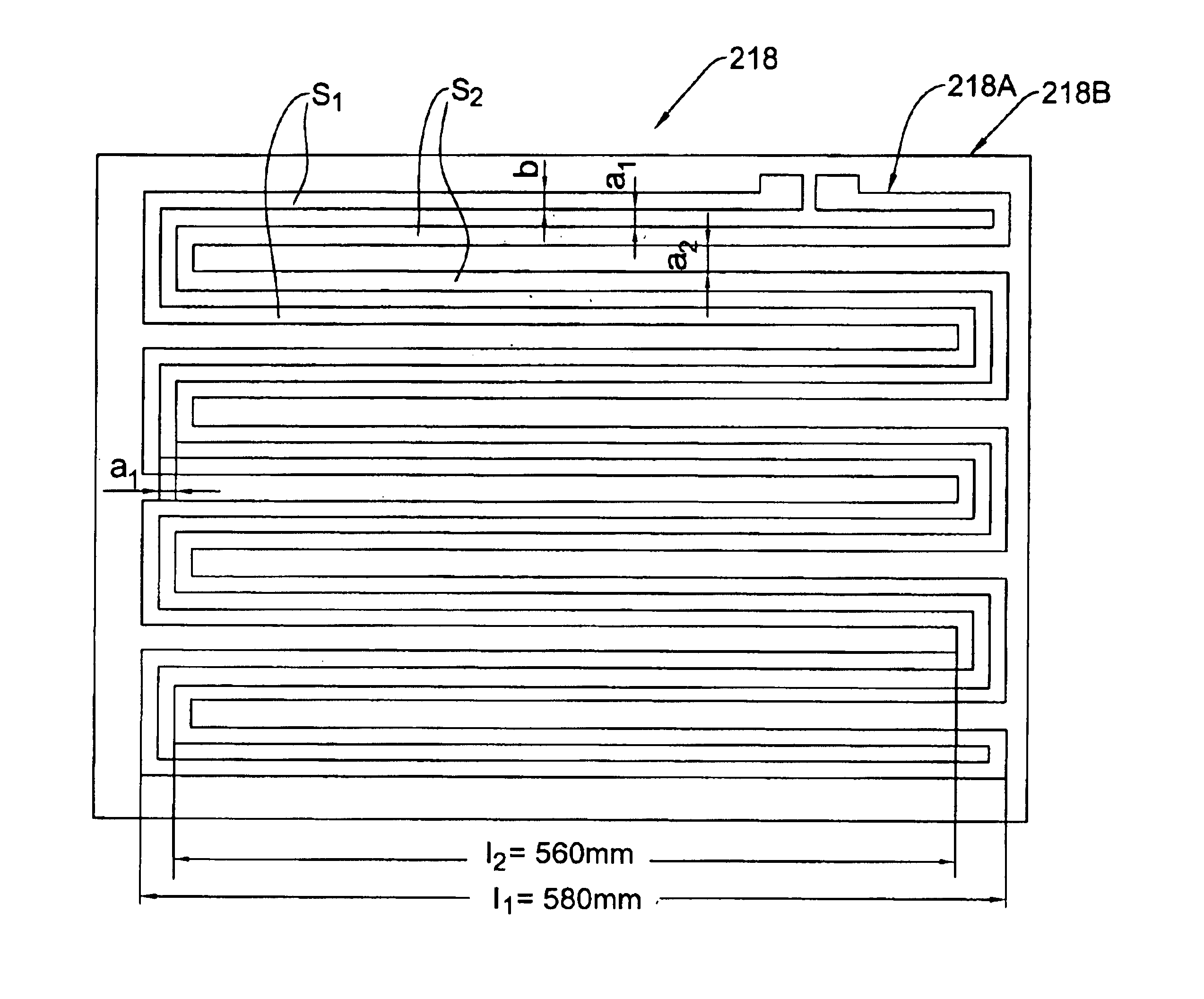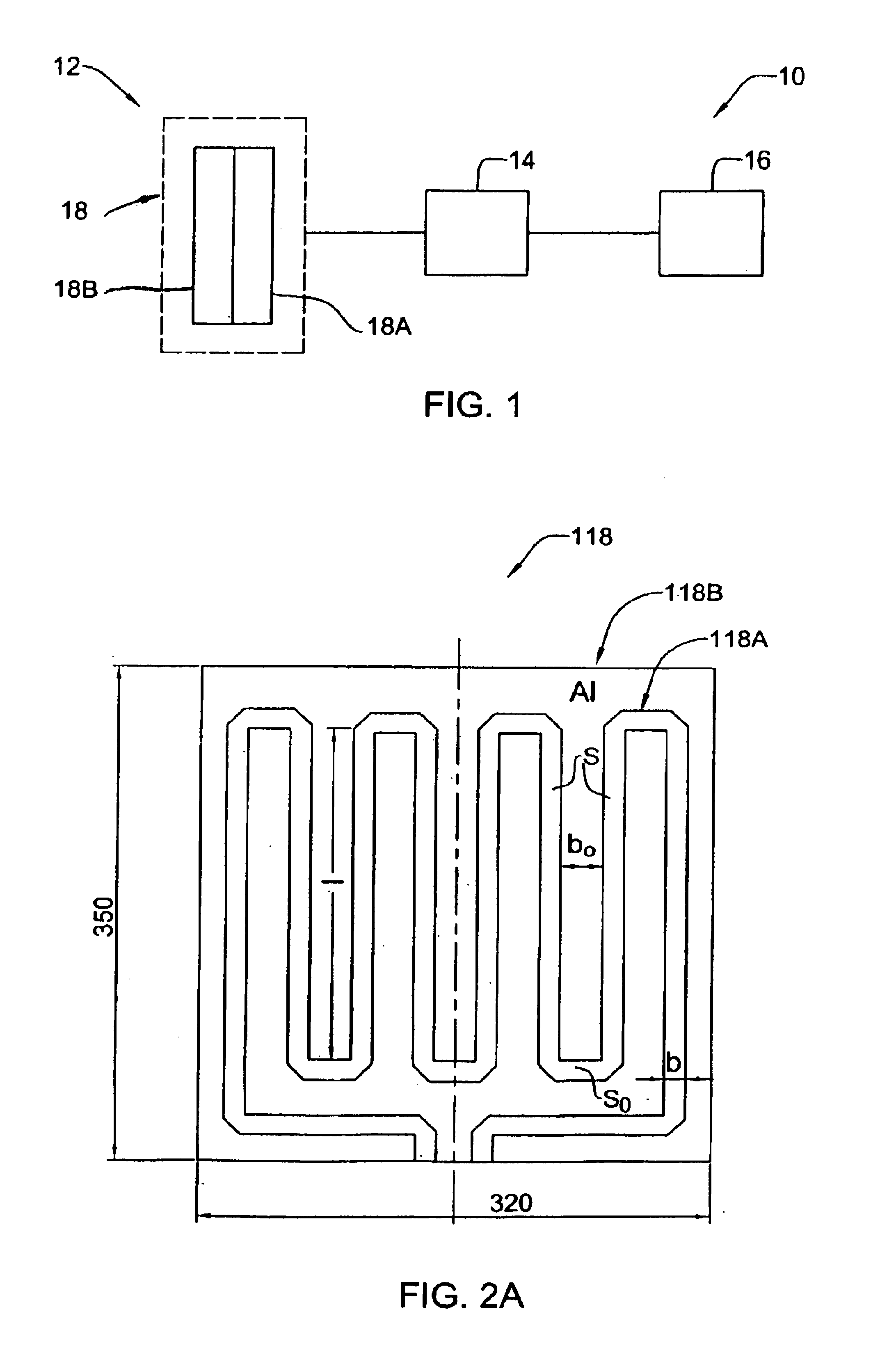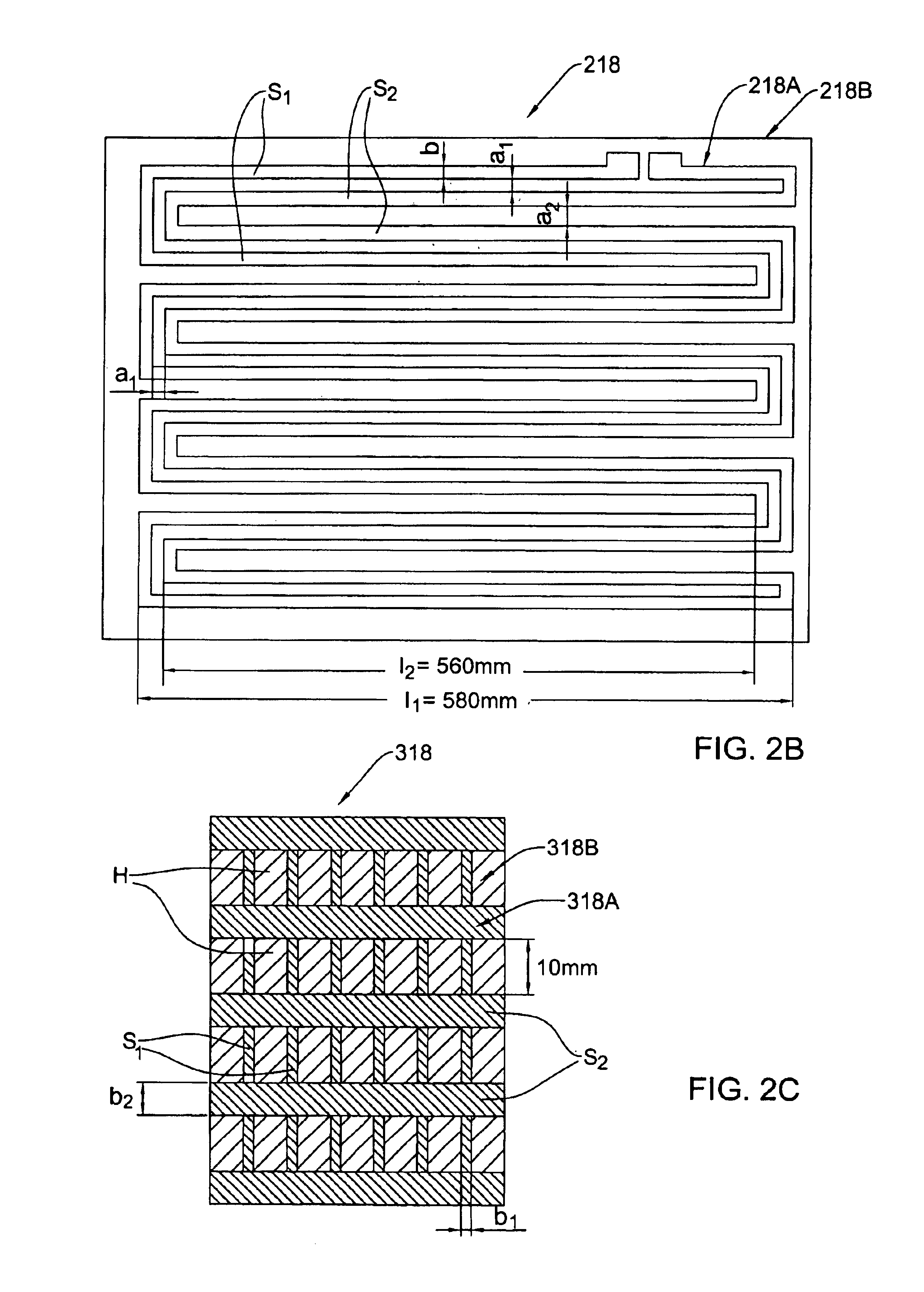Electrical heating device
- Summary
- Abstract
- Description
- Claims
- Application Information
AI Technical Summary
Benefits of technology
Problems solved by technology
Method used
Image
Examples
Embodiment Construction
[0037]Referring to FIG. 1, there is illustrated a heating element 10 comprising a heating device 12 that includes a heating unit 18 according to the invention connectable to a power supply source 14; and a control unit 16. The construction of the control unit 16 does not form part of the present invention, and it may be of any known kind utilizing at least one temperature sensor, processors, contact and non-contact switches, etc. The power supply source 14 as a separate element is also known per se and therefore its construction and operation need not be specifically described, except to note that it operates to provide the normal operational mode of the heating unit 18 in accordance with instructions generated by the control unit 16.
[0038]The heating unit 18 is composed of two adjacent elements 18A and 18B accommodated in spaced-apart planes for example at a 1 mm distance between the elements. The elements 18A and 18B are electrically insulated from each other, for example, by lami...
PUM
 Login to View More
Login to View More Abstract
Description
Claims
Application Information
 Login to View More
Login to View More - R&D
- Intellectual Property
- Life Sciences
- Materials
- Tech Scout
- Unparalleled Data Quality
- Higher Quality Content
- 60% Fewer Hallucinations
Browse by: Latest US Patents, China's latest patents, Technical Efficacy Thesaurus, Application Domain, Technology Topic, Popular Technical Reports.
© 2025 PatSnap. All rights reserved.Legal|Privacy policy|Modern Slavery Act Transparency Statement|Sitemap|About US| Contact US: help@patsnap.com



